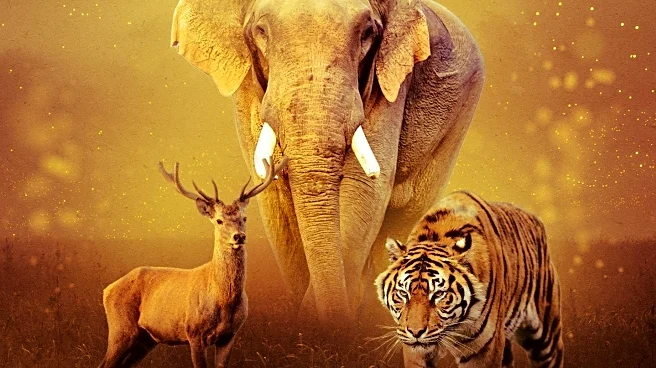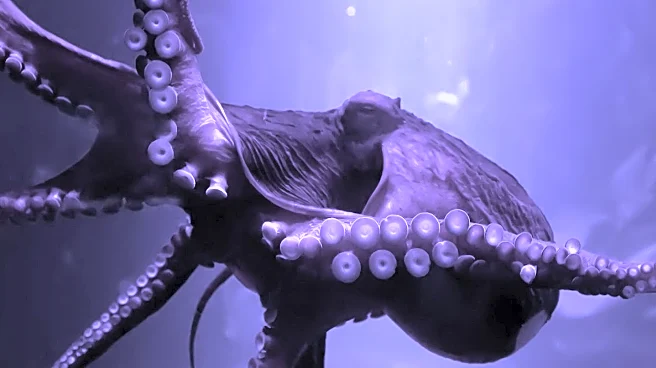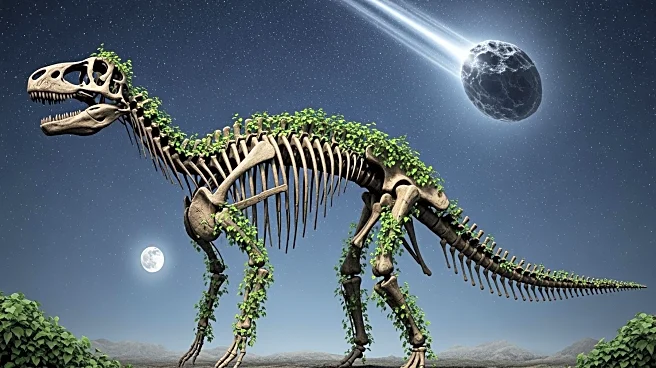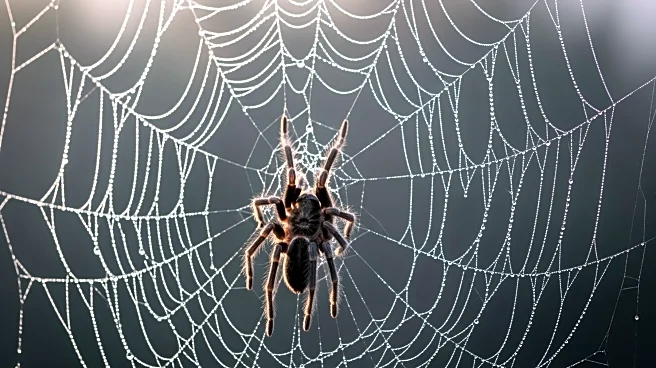What's Happening?
An interactive feature highlights the fascinating world of animal mimicry, where various species adopt disguises to survive in their natural habitats. This evolutionary process allows animals to resemble
other species, either to deter predators, attract prey, or blend into their surroundings. The feature categorizes these mimicry strategies into several types, such as Batesian mimicry, where harmless species imitate dangerous ones, and Müllerian mimicry, where different species share similar warning signals. Examples include cheetah cubs mimicking honey badgers, moths resembling wasps, and the mimic octopus, which can imitate multiple species. The article invites readers to vote on the best animal disguises, emphasizing the role of mimicry in the animal kingdom's survival tactics.
Why It's Important?
Understanding animal mimicry provides insights into evolutionary biology and the adaptive strategies species use to survive. This knowledge can inform conservation efforts, as it highlights the intricate relationships between species and their environments. Mimicry also underscores the importance of biodiversity, as the disappearance of one species can impact others that rely on mimicry for survival. For instance, the decline of coral snakes affects king snakes that mimic their appearance. Additionally, climate change poses challenges to species like the white-tailed jackrabbit, whose seasonal camouflage becomes ineffective with reduced snowfall. These examples illustrate the broader ecological impacts of environmental changes and the need for sustainable practices to preserve these complex ecosystems.
What's Next?
The ongoing study of mimicry could lead to new discoveries in evolutionary biology and ecology. Researchers may focus on how climate change and habitat loss affect mimicry strategies and the survival of species that rely on them. Conservationists might use this information to develop targeted strategies to protect vulnerable species and maintain ecological balance. Public engagement through interactive features like this one can raise awareness about the importance of biodiversity and the need for conservation efforts. As more people become informed about these issues, there may be increased support for policies aimed at preserving natural habitats and mitigating climate change impacts.
Beyond the Headlines
The exploration of animal mimicry also touches on ethical considerations regarding human impact on the environment. As human activities continue to alter ecosystems, the survival of species that depend on mimicry is at risk. This raises questions about our responsibility to protect these species and their habitats. Furthermore, the study of mimicry can inspire innovations in technology and design, as researchers look to nature for solutions to human challenges. Biomimicry, the practice of emulating nature's strategies, could lead to advancements in fields such as materials science, robotics, and sustainable architecture.











